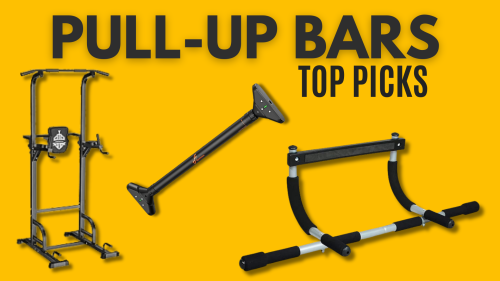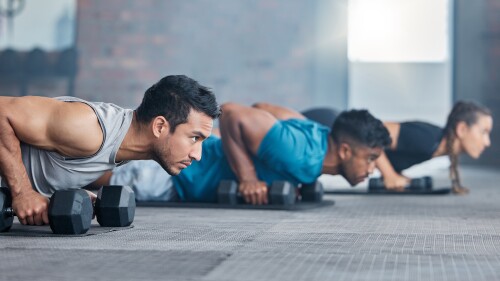By Kelly Keith
Picture this scenario: Suspect is a 250-lb, 6’2” male, large build; police officer is a 120-lb, 5’7” female, slender build. If the suspect attacks the police officer, what factors determine who wins this altercation?
If the above-mentioned police officer trained with weights every day, is it possible she would be able to match the strength of the suspect?
As police trainers with a limited amount of time, are we getting the best return for our time by getting our recruits/officers into the gym on weights and/or running? Does this type of fitness training turn out an officer who is going to defend him or herself better?
Training with weights and running are great ways to build foundations, but as police trainers, we need to enhance other fitness components that will enable the officer to win.
A simple example is rotary power. Rotary power will address how hard you can swing your baton, punch, kick and/or throw a suspect to the ground. Rotary power is also needed in most escapes from the ground. Officers can increase rotary power just as easily as build bigger biceps!
Why is fitness important for police?
Fitness is critically important for police officers because it directly impacts officer safety, survivability, and long-term health. According to Police Chief Magazine, maintaining a high level of physical fitness can help officers effectively manage high-stress situations, use lower levels of force, deter threats through strong command presence and reduce their risk of sudden cardiac events. Strong fitness programs for law enforcement not only enhance daily performance but also support healthier, longer careers.
How physically fit do you have to be as a police officer?
Many law enforcement agencies require officers to pass physical fitness tests that assess strength, endurance and agility. For example, standards often include completing a 1.5-mile run within 12 to 15 minutes, performing 25 to 40 push-ups, and executing 30 to 45 sit-ups within one minute, according to the lnternational Association of Chiefs of Police. Maintaining police officer fitness standards is critical for operational effectiveness and officer safety, helping officers respond quickly and survive high-risk encounters. Regular physical training ensures officers are prepared both mentally and physically for the unpredictable challenges of policing.
What is the physical fitness test for a police officer?
Law enforcement fitness standards can vary across different agencies. As an example of officer standards for sheriff’s offices, the Orange County Sheriff’s Office in Florida requires all officers to complete a 1.5 mile run in 18 minutes. It requires male officers to complete at least 15 push-ups in one minute and 25 sit-ups in one minute. Women are required to complete at least 17 sit-ups in one minute as well as at least 10 push-ups in one minute. Applicants who successfully complete the other standards will be required to participate in an additional 30 minute “Post PAT” workout conducted by an instructor.
There will always be strength differences. It is not possible to always be stronger or in better shape than all of our suspects. Many fitness factors have to be considered to optimize a police officer’s fitness and ability to defend him/herself. Here are 11 key components:
1. Muscular power/speed strength
This refers to the ability to produce force in a brief amount of time, in other words, the product of force and velocity. Should a police officer possess strength, but cannot apply this strength rapidly, the amount of strength he has is irrelevant if it cannot be applied in time. Thus to develop power, you must apply speed to the desired movement or specific tactical situation.
This is imperative for a police officer, as the ability to produce force in a brief amount of time is vital in any physical confrontation. There are many very strong police officers who are not able to transition this strength into “speed strength,” which I believe is more beneficial to police officers.
2. Muscular strength
This is considered the ability to produce maximal force. Strength is vital to optimize muscular power, but is different in the speed that the force is exerted. Research indicates that most people can perform about 10 repetitions with 75 % of their 1-rep maximum. Thus if someone can bench press 100 pounds for 1 repetition they are most likely to be able to perform about 10 repetitions with 75 pounds.
3. Muscular endurance
This is the ability to perform repeated muscular actions, which can be very important in any physical confrontation that lasts longer than approximately 15 seconds. In any altercation, the addition of muscular endurance will lengthen the time period you can physically perform under stressful metabolic conditions.
Muscular endurance is an important aspect of a police officer training program. The principle of specificity applies, which means that muscular endurance is activity-specific. A marathon runner has muscular endurance in his legs, but that would not mean he can skate the same distance. By simply running, police officers should not believe they could grapple on the ground longer than a subject trained for this stimulus.
4. Flexibility
This is the ability to move the joints through a range of motion. In weight training it is vital to exercise both sides of a joint so as to not limit joint flexibility.
There are several benefits of flexibility:
- Less energy to move a joint through a range of motion;
- Decreased risk of injury;
- Increased blood supply and nutrients to joint structures;
- Increased neuromuscular coordination /opposing muscle groups work in a more synergistic or coordinated fashion;
- Improved muscular balance and postural awareness;
- Decreased risk of lower back pain;
- Reduced stress as stretching promotes muscle relaxation.
5. Balance
Balance is the ability to maintain the center of body mass over a base of support. This is another very important factor for a police officer as the officer’s ability to be stable when the body is in motion is a crucial element in a physical confrontation.
6. Body composition
Body composition describes age, height, gender, body type, body mass, muscle fiber type, etc. Each officer brings their genetic inheritance into the mix, however, how they train, and how they use available strategies and integrate them into a performance dictates the degree of success.
7. Cardiorespiratory fitness/aerobic endurance
This is the ability to persist or sustain activity for a prolonged period of time.
For best results, strive for 50 percent to 85 percent of maximal oxygen uptake to get optimal cardiorespiratory results. Duration will vary depending on intensity.
Generally, police officers with greater cardiorespiratory fitness have more stamina, less fatigue and fewer injuries.
8. Agility
Agility is sometimes thought of as the culmination of nearly all the physical abilities a person possesses. It is the ability to stop and change direction quickly. I cannot think of any confrontational situations that require speed in only a straight-line movement.
Agility is composed of:
- Coordination
- Stabilization
- Biomechanics
- Speed
- Strength (stabilizing / propulsive)
- Energy system development
- Elasticity
- Power
- Dynamic Balance
- Mobility
Studies show a tennis player shows greater agility when he has a tennis racquet in his hand than when he does not. Thus training agility is optimized when the implement you wish agility to be utilized is used when training (baton, sidearm, empty-handed, etc.).
This is often overlooked as an aspect of fitness, but extremely important for a police officer. One of the most important qualities of control tactics is for the officer to get off the line of attack. Most police attacks are spontaneous; whether it is a fist, knife or bullet, if the officer gets off the line of attack he is far more likely to win the confrontation.
9. Quickness/reaction time
This fitness aspect is very important to policing. How fast can the officer get to his equipment when the stimulus is presented to the officer? If this aspect is enhanced, the police officer can improve his/her chances of success in a confrontation.
Quickness allows a small officer to prosper in a big “man’s” game and gives a large officer another way to improve their tactics.
10. Speed
Pure speed can give a police officer an advantage in getting to cover, tactically re-positioning, getting to the aid of a victim or catching a suspect in a short foot chase.
11. Coordination
Coordination reflects how well joints manage the muscular firing patterns between or among them. It is crucial in hand-eye relationship needed in policing.
Coordination is prominent in transition exercises (like baton to sidearm). It is also important in shooting and many other firearm activities.
About the author
About the author Kelly Keith previously served with the Atlantic Police Academy, instructing physical fitness, officer safety, use of force and firearms. Kelly is a jiu-jitsu instructor and has studied wrestling, boxing, tae kwon do and judo. He is also a certified personal trainer, certified strength and conditioning instructor and a certified sports nutrition specialist.
This article, originally published August 4, 2006, has been updated.







